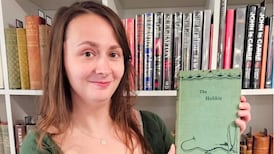ESSAYS: FIN KEEGANreviews Between Parentheses: Essays, Articles, and Speeches, 1998-2003 By Roberto Bolaño, edited by Ignacio Echevarría and translated by Natasha Wimmer Picador, 390pp. £12.99
IN THE FINAL HALF-DECADE of his life, the literary magician Roberto Bolaño (1953-2003), not content with Balzacian productivity on the fiction side, opened up a new and fertile wing to his output: journalism. An anthology of these late articles is gathered in this volume, bundled with sundry speeches and literary matter, together with a lengthy interview published on the day of his death. Many pieces blur fact and fiction, just as his novels seem to.
Scanning the multitude of short items in the contents, one might assume this to be a book made for dipping. I found otherwise. Between Parentheses is an intelligently organised “personal cartography”, as the editor puts it, best read from front to back. (Readers new to Bolaño should try any of the better-known novels first.)
Most of these texts concern encounters with books and writers in the places where his life began (Chile, which he left at 15, rarely to return) and where it ended (Blanes, the coastal town near Barcelona where, he writes, he recovered his “will and courage”). Many of the familiar pleasures from his novels are to be found here: the book is by turns intense, funny, paradoxical, mischievous and insightful.
Like Cocteau, his respect for poets knows no limit:
If I had to hold up the most heavily guarded bank in Europe and I could choose my partners in crime, I’d take a gang of five poets, no question about it. Five real poets, Apollonian or Dionysian, but always real, ready to live and die like poets. No one in the world is as brave as a poet.
Besides minor poets he is constantly drawing our attention (and no harm it is) to the vastly wider circle of unremembered writers, those who may or may not have influenced the young at some point but who are now so obscure that they “can’t even be found on the internet, which is saying a lot, as if they’d never existed or as if we’d imagined them”.
Bolaño also took seriously the Orphic responsibility to visit the underworlds of one’s time: the word “hell” recurs like a slowly pulsing LED through these pages. At the time he was writing this material, his primary task was producing the novel 2666, an unblinking account of the bloodbath in Ciudad Juárez, in northern Mexico. But his moral sensibility was formed much earlier, in the days of Pinochet and Allende: in this connection he relates the remarkable story (“this isn’t fiction, it’s real”) in which a guest from a literary soiree hosted by a right-wing power couple takes a wrong turn on the way to a bathroom only to find himself in a basement given over to torture. (This anecdote, incidentally, was supported by court evidence in 2008.)
Another word he frequently mentions is “void”, defined as the “one true patron” for serious artists: “gazing fearlessly into the depths” is the obligation of any writer courageous enough to grasp their vocation fully. The reader’s pleasure may be the goal for poets and novelists, a state attained through rigorous artistry, but, for Bolaño, writers cannot be great if they neglect the horror of life. Above all, he is disdainful of what he calls “corseted prose” and those who do not care about their characters enough. (Read Longinus, he counsels apprentice writers.)
Though the writing is occasionally confessional, we discover little in particular of his family or childhood, or personal dramas. We are told of “endless southern rains” falling on a wooden-walled home in which the boy discovers “that without leaving my house I could get to know the whole world”. Also included in this collection is the much-debated piece, set on a Spanish beach, in which the narrator talks of kicking a heroin habit and undergoing methadone treatment: it seems fictional to me, but some hold otherwise.
Whatever the bald facts of what Bolaño called his “wild life”, we draw close to the author in the same way we might bond with an intriguing stranger on the train: this is someone who values friendship, who is intrigued by hierarchies (a natural vice of the librarian) and who metes out both extravagant praise and exacting criticism. Between Parentheses introduces us too to Roberto Bolaño the reader, a man preoccupied with the meaning of libraries – perhaps understandable in someone who lost his own book collection at least twice over. Frequently he praises those who have “read everything”, or are prepared to. It is sad to think not only of the books he did not live to write but also of those he did not live to read.
Late in this anthology the persona may wear thin in places, especially as repetition creeps in, but then these productions date from a time when the writer, physically at least, was wearing thin himself: he lived with liver disease for his last 11 years. In this context, his commitment to literature is moving indeed.
What Roberto Bolaño restored to us was the full range of literature’s excitement, something of the feeling the great authors gave us when they first swept into our lives. There has been a long succession of publications since his death. Some are wondering how worthwhile this material can be and whether he is really worth the fuss. All I can say is that when we finish the last Bolaño book, and have none more to look forward to, we will be counting ourselves deprived.
Fin Keegan is a freelance writer and broadcaster










